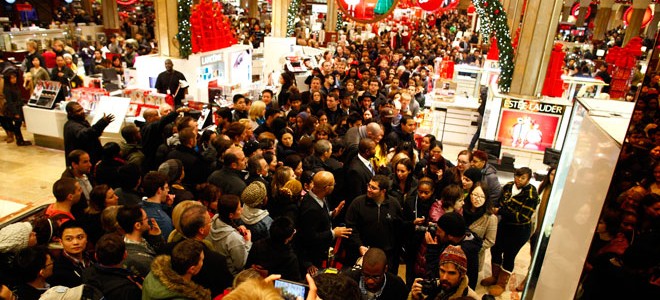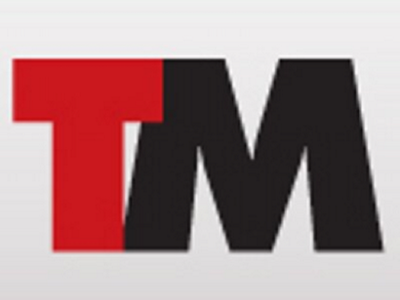“Touch screens have provided a decidedly more direct way to interact with apps, and most of us are familiar with this on our smart phones and tablets,” he said. “Taking that a step further, marketers can experiment with the placement of products on a screen to force gestures that are engaging with […]
Category Archives: Articles
Ken Wisnefski lends his 2015 business predictions to Business News Daily
“Television content providers will shift their focus over to digital streaming as people turn primarily toward online for episodic programming, with exclusive online brands like Netflix, Hulu and now HBO offering content online. This is already causing a lot of concern for TV and cable networks as well as carriers, who tend to rely on […]
Ken Wisnefski in Mobile Marketer on Instagram’s purge of fake followers.
“A lot of stars do buy fake followers to pad their follow numbers and many just attract fake spam accounts that try to piggyback on their fame,” said Ken Wisnesfki, CEO and founder of WebiMax. ”Companies and brands will cozy up to celebs and pay big bucks to get them to broadcast […]
The value of fake friends…
Celebrities with a large number of Instagram followers have taken a substantial hit this week devaluing their accounts as Instagram announced that they have “completed a fix to remove spammy accounts.” Stars like Kim Kardashian and Katy Perry both saw their followers fall by over a million each. There’s a huge advertising opportunity […]
Ken Wisnefski in EContent Magazine on the increased trust in branded content
To effectively introduce branded content without compromising your relationship with consumers, offer helpful and insightful information that the reader can use. “Include valuable information that provides the answers that users are looking for. You don’t want to give away the store, but provide something that makes it clear that your brand is a trusted […]
Ken Wisnefski talks about why holiday office parties are good for business – from Cleveland.com
Ken Wisnefski, CEO of WebiMax, an Internet marketing firm, believes not having a holiday party could cost a company more in the end. “When I have asked our employees to recall their favorite moments on their jobs, they almost always cite either a holiday party or an office get-together,” he said in a news release. […]
Ken Wisnefski talks about the worst / best office holiday gifts with ABC News’ Susanna Kim
When it comes to holiday gifts at the office, when your job and reputation are on the line, it’s not just the thought that counts. Ken Wisnefski, CEO of Internet marketing firm WebiMax, based in Camden, New Jersey, learned that lesson the hard way. “A few years back, I went through a lot of trouble getting everyone […]
Ken Wisnefski in the Chicago Tribune on holiday office parties
Ken Wisnefski, CEO of WebiMax, an Internet marketing firm, said not having a holiday party can hurt morale and productivity. Failing to consider morale, he said, could lead to higher employee turnover rates and more conflicts between employees. Click Here to Read the Full Story
Brick and Mortar is Pushing Back against E-tailers… and intelligently using technology to do it
Brick and Mortar establishments, small ones included, are getting wise to the mobile revolution. Folks used to talk about ecommerce winning the war over brick and mortar due to its convenience, but companies are beginning to understand the dynamics between that ultra-convenience of mobile ecommerce, and the human need to get out of the house […]
Ken Wisnefski pens an article for Target Marketing on Facebook’s post monitoring feature for business
In this article from Target Marketing, author Ken Wisnefski highlights a little known feature that helps businesses keep track of their social media teams: A Facebook Business Pages feature makes it a little bit easier to monitor posts—the name of the person who publishes each post is listed under the company name. This information is only visible […]
Ken Wisnefski in the Staten Island Advance on Black Friday and Social Media
Ken Wisnefski was interviewed for the Staten Island Advance to talk about how mobile technology and social media is impacting marketing on Black Friday. “Facebook has just made it easy for small businesses to start implementing geo location into their marketing quickly and in a mobile medium that most people are familiar with,” said […]
Ken Wisnefski profiled in CBS Philly online
Ken Wisnefski was profiled in CBS Philly online to talk about his success being an entrepreneur and to offer advise to those seeking a career in business management. “Knowing how to delegate tasks and who to delegate them to is a skill, but don’t be above tasks. Know when to step into those tasks […]
Ken discusses Target’s new Mobile App with Chief Marketer Magazine
Target’s new mobile app provides customers with in-store inventory information and store maps. Wisnefski says that combining this kind of app solution with mobile payment will allow people to avoid lines and could make the hassles of brick and mortar shopping experiences a thing of the past. “People will never give-up […]
Ken talks same-day delivery for Brick and Mortar stores with NorthJersey.com
“The ability for brick-and-mortar stores and malls to be able to marry both the ability to peruse and buy things online, and the ability to have it delivered quickly from the local mall, is kind of where the stores have to go to be able to survive,” said e-commerce expert Ken Wisnewski, chief executive of […]
TV’s future looks bleak as content moves online
To say that the way people consume media, or content is changing would have to be the understatement of the decade. While bandwidth and computing speed has continually increased since the 90’s, people have been discovering new digital avenues to interact with news, entertainment, games and even each other. […]
Snapchat takes no responsibility for the Snappening or you thinking your “Snaps” would actually disappear.
So “the Snappening” happened last month, and 90,000 private photos taken by Snapchat users (mostly of an explicit nature) were leaked over the internet. But according to a new study by Sumpto, the majority of college students still trust Snapchat and will continue to use it. My thoughts are that Snapchat isn’t blameless, and people […]
Ken Wisnefski in Bloomberg News on Alibaba’s 3rd quarter
“Mobile utilization is only going to increase — and people expect that experience to get even better over time,” Ken Wisnefski, founder of Internet marketer WebiMax, wrote in a report. “It is so important for businesses that want to be around in the next decade to start thinking in terms of mobile.” Click Here to […]
Ken Wisnefski in the Washington Post on Alibaba’s 3rd quarter earnings
Ken was quoted in the Washington Post in an article about Alibaba’s 3rd quarter earnings and the importance of mobile utilization for business going forward. Click here to Read the Full Story
Ken Wisnefski in Women’s Wear Daily on Alibaba Mobile Growth
Ken Wisnefski spoke to Women’s Wear Daily Financial Editor Arnold Karr on Ecommerce giant Alibaba’s 3rd Quarter. In Alibaba’s first earnings report, mobile Gross Merchandise Volume (GMV) as a percentage of total GMV, was 35.8% of their total GMV, and more than double what it was last September. Ken felt that Alibaba’s experience, both inside […]
In the publicly-held tech arena, will HubSpot be a winner or a loser?
HubSpot recently had a very successful IPO, but does it have what it takes to be successful long-term? Recently it seems we are living in an era where some big tech company seems to launch, get bought, or has an IPO every other week. The business models for some of them are something altogether untested […]

















